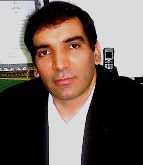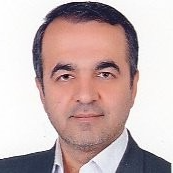
Hamid Soltanian-Zadeh, PhD
University of Tehran and Institute for Research in Fundamental Sciences (IPM), Tehran, Iran, and Henry Ford Health System, Detroit, Michigan, USA
(Title: Analysis of Medical Images Using Deep Neural Networks)
Abstract
Medical images play key roles in diagnosis, treatment planning, treatment evaluation, and prognosis of various diseases. While qualitative analysis of medical images by clinical experts is essential, their quantitative analysis greatly aids physicians and makes significant contributions to the diagnosis, treatment planning, treatment evaluation, and prognosis. Such quantitative analysis requires various image processing and pattern recognition algorithms for noise suppression, image restoration and enhancement, organ or structure segmentation, and tissue characterization and quantification. With the advancement of deep neural networks, many of these tasks can nowadays be done by such networks. However, the design and application of these networks are challenging. In this presentation, I will introduce deep neural networks that have been developed in recent years for addressing some of the medical image analysis problems. I will also describe a major challenge in the development of such networks and our approach to solve it. I will conclude my presentation with a summary of the achievements and the remaining problems in this exciting and impactful field.
************************************************************************************************
*****************************************************************************
**************************************
***********

Mohammad Hossein Yaghmaee Moghaddam, PhD
Ferdowsi University of Mashhad, Mashhad, Iran, and University of Toronto, Canada.
(Title: How Cloud/Fog Computing Improves Demand Response Programs)
Abstract
With an increase in the utilization of appliances, meeting the energy demand of consumers by traditional power grids is an important issue. Demand Response programs have been introduced to provide balance between supply and demand. The success of demand response programs depend conclusively on real-time data communication between the consumers and the suppliers. Hence, a scalable and programmable communication network is required to handle the data generated. Due to the recent advances in Information and Communication Technology (ICT), the telecommunication industry trends have been changed. Software Defined Networking (SDN), Cloud Computing and Network Function Virtualization (NFV) are some new developments which provide huge evolution in the telecommunication industry. In this talk, the impact of cloud/fog computing on improving demand response performance is investigated.
************************************************************************************************
*****************************************************************************
**************************************
*********

Hamid Hassanpour, PhD
Shahrood University of Technology, Shahrood, Iran.
(Title: Intelligent Systems and Online Exam Surveillance)
Abstract
Online exams are a necessity for today’s society, but surveillance problems impair the accuracy of this type of examination. By using intelligent systems, it is possible to closely monitor online exams and reduce the cost of holding exams without the need for a human supervisor.
Two types of cheating may occur in exams: faking one’s identity and assigning the exam to a third party, or obtaining answers through unauthorized sources. Despite the accuracy that proctors have in face-to-face exams on the identity and behavior of examinees, significant cases of cheating are usually reported in this type of examination. The identity of the examinees can be recognized at the beginning and during the exam by using an intelligent monitoring system. Face recognition methods can be used to verify the identity of the examinee. In addition, just as handwriting is one of the methods of authentication, how people type can also be used as a biometric method to identify people. There are several ways to use features related to how people type for identification.
Exam proctors can detect fraud by carefully monitoring the behavior of examinees. Fraud may be overt or covert. When the examinee uses a person or device such as a mobile phone during the exam, he or she is usually identified by the proctor. With advances in machine vision technology, this type of fraud can be easily detected by intelligent systems.
In covert fraud, the means of fraud are hidden from the proctors' point of view, or fraud is generally done without special means. During covert cheating, the examinee exhibits unusual behavior, such as not paying attention to the exam questions. In this presentation, the detection of scenes suspected of hidden fraud in electronic tests through the behavioral analysis of the examinee is considered. This can be considered as an issue of video anomaly detection. Given that human behavior is manifested by the posture and movements of the body, they play a key role in identifying fraudulent behavior. Therefore, recognizing the state of the body, e.g. emotional states such as stress, as well as recognizing human activities are the main research fields related to this subject.
In this keynote talk, while providing solutions for identifying different types of online exam fraud, various research aspects are discussed and an intelligent system is proposed for video surveillance.
************************************************************************************************
*****************************************************************************
**************************************
*********

Hossein Sameti, PhD
Sharif University of Technology, Tehran, Iran.
(Title: Language, Computing, and AI)
Abstract
![ICSPIS-en[4358].jpg](../../years/2021/ICSPIS-2021-en[4384].jpg)
Submission Deadline: Oct 7, 2021 Oct 22, 2021 (Extended) Oct 27, 2021 (Final Extension)
Workshop Proposal deadline: Nov 6, 2021
Workshop Admission Announcement: Nov 20, 2021
Notification of Acceptance: Nov 22, 2021 Dec 6, 2021
Registration and Submission for Final Version: Dec 6, 2021, Dec 16, 2021.
Conference Date: Dec 29 and 30, 2021
Postal Address: School of Computer Engineering, Iran University of Science and Technology, University Road, Hengam Street, Resalat Square, Narmak, Tehran, Iran
Zip Code: 16846-13114
Tel: +98 (21) 73225316
Fax: +98 (21) 73225322
Email: ICSPIS2021@gmail.com
Conference Correspondence: Dr. Marzieh Malekimajd
December 27, 2021
